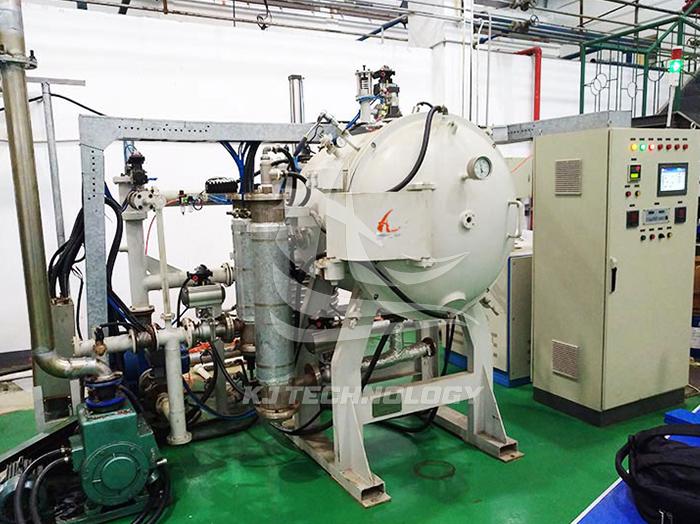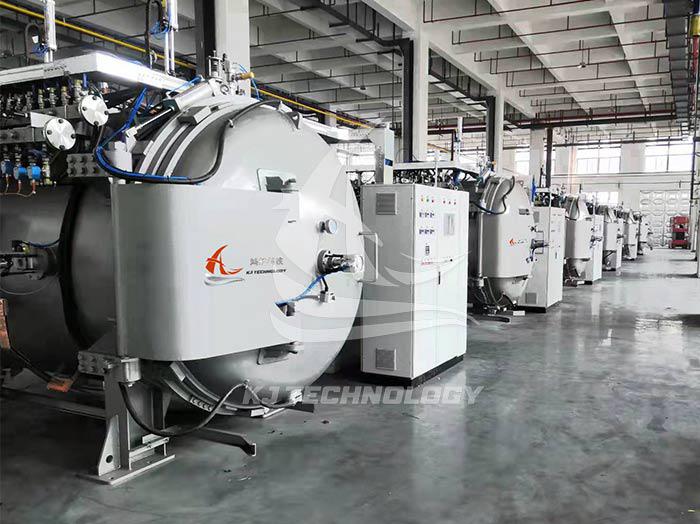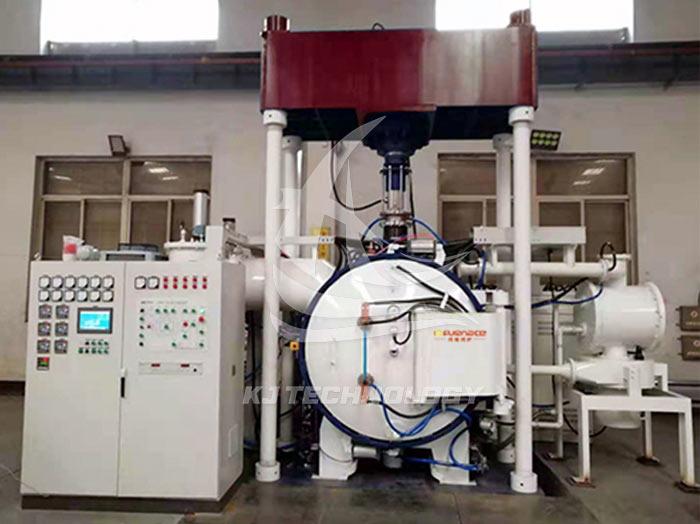What should be noted when selecting an industrial vacuum heat treatment furnace?
 05-08-2025 Author: KJ technology
05-08-2025 Author: KJ technology
The selection of industrial vacuum heat treatment furnaces requires comprehensive consideration of multiple factors. In addition to the process requirements, production capacity, equipment performance, equipment reliability and maintainability, energy consumption, and operating costs mentioned above, the following aspects should also be noted:
safety performance
Safety devices: The equipment should be equipped with comprehensive safety devices, such as over temperature protection, leakage protection, vacuum leakage protection, overpressure protection, etc., to prevent safety accidents during operation and ensure the safety of operators and equipment.
Protective measures: The furnace body should have good insulation performance to prevent operators from getting burned; The observation window should be made of special glass that is heat-resistant and explosion-proof, and equipped with protective devices to avoid breakage and injury; At the same time, the casing of the equipment should be well grounded to prevent electric shock accidents.
automaticity
Control system: Advanced control systems can achieve precise control and automated operation of heat treatment processes, improving production efficiency and product quality stability. For example, by using a PLC control system combined with a touch screen operation interface, it is easy to set and modify process parameters, monitor real-time parameters such as temperature and vacuum degree inside the furnace, and have data recording and traceability functions.
Automation function: Select equipment with automated loading and unloading, clamping, cooling, and other functions according to production needs, which can reduce manual operations, lower labor intensity, improve production efficiency, and also help improve process consistency and repeatability.
environmental requirements
Exhaust emissions: During the vacuum heat treatment process, some exhaust gases may be generated, such as oil mist, water vapor, volatile organic compounds, etc. The equipment should be equipped with effective exhaust gas treatment devices, such as oil mist purifiers, activated carbon adsorption devices, etc., to ensure that the exhaust gas meets the emission standards and environmental protection requirements.
Noise control: Vacuum pumps, cooling systems, and other equipment may generate noise during operation. Choose equipment with lower noise levels and take corresponding noise reduction measures, such as installing shock absorbers, mufflers, etc., to reduce the impact on the working environment and operators.
Investment cost
Equipment prices: The prices of vacuum heat treatment furnaces vary greatly depending on different manufacturers, specifications, and configurations. When selecting equipment, it is necessary to consider factors such as performance, quality, and after-sales service based on the enterprise's budget and investment plan, and choose equipment with high cost-effectiveness to avoid blindly pursuing high-end equipment and causing investment waste.
Cost of supporting facilities: In addition to the price of the equipment itself, the cost of supporting facilities such as vacuum systems, cooling systems, power supply systems, etc. should also be considered for installation and renovation costs. At the same time, it is necessary to consider the installation space requirements of the equipment and whether corresponding modifications are needed for the factory building.








